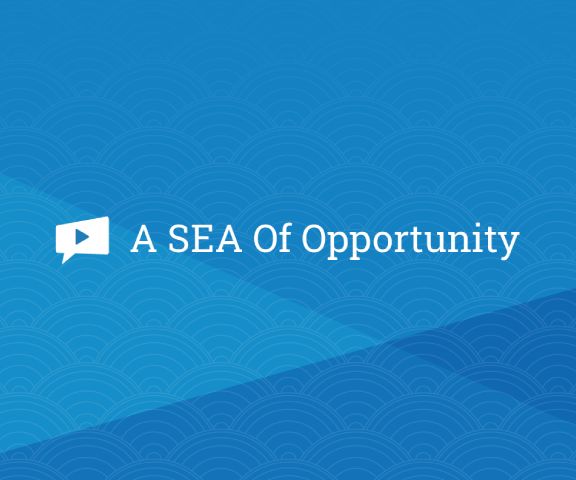Learn how to navigate diverse business opportunities in Southeast Asia
From consumer and supply chain insights, to innovation and startup trends, check out this five-part webinar series to learn more.

We spoke with Dr Zubin J Daruwalla, the Health Industries Leader of PwC Singapore and take a look at why digital health is set to disrupt Southeast Asia’s (SEA) growing healthcare industry, and how Singapore empowers companies for growth in SEA.
“COVID-19 has most certainly imposed what was already a long time coming,” says PwC Singapore’s Health Industries Leader, Dr Zubin Daruwalla. The pandemic has accelerated the arrival of what he terms the New Health Economy (NHE) – the future of healthcare.
With the NHE, the delivery and innovation of healthcare solutions are now guided by consumer needs, giving rise to digital health solutions that directly connect provider and patient. From telehealth to remote patient analytics, COVID-19 has normalised the use of digital solutions in our everyday lives, transforming healthcare norms.
For example, when Singapore’s first digital health startup, MyDoc, launched in 2012, the company faced resistance from consumers and clinical practitioners who favoured in-person consultations. During the pandemic, MyDoc’s COVID-19 clinic saw a 32-fold jump in weekly sign-up rates in its first weekend.
This growing openness to HealthTech innovations is a boon to the region’s markets, addressing immediate needs as well as longstanding problems of access and unequal standards of healthcare across SEA.

From consumer and supply chain insights, to innovation and startup trends, check out this five-part webinar series to learn more.
Trends fuelling HealthTech growth opportunities in Southeast Asia
Demand for quality healthcare in SEA is projected to keep growing. In the region’s largest six nations alone, public healthcare expenditure will double to US$740 billion (S$1,012 billion) between 2017 and 2025, driven by demographics and risk behaviours such as obesity and smoking.
Enter technology, which enables swathes of SEA’s population to leapfrog healthcare access hurdles, manage healthcare needs and improve their quality of life.
The region is enjoying strong growth in telehealth, digital therapeutics, diagnostics, remote patient monitoring and analytics. PwC had observed this in the “Digital Healthcare Leap” as far back as 2016.
Increased consumer demand for healthcare on fingertips
For SEA consumers in this mobile-first region, HealthTech solutions are increasingly becoming a lifestyle staple. Digital tools are bringing healthcare solutions to consumers’ fingertips, giving them access to customised, patient-first healthcare experiences.
For instance, the region’s leading ‘superapp’ now offers integrated healthcare content, consultations, and medicine purchases, thanks to a collaboration between regional ride-hailing tech company Grab and digital healthcare leader Ping An Good Doctor.
Pan-Asian insurance firms are collaborating with HealthTech startups to integrate digital solutions within their suite of services, such as AIA’s partnership with Holmusk and Cigna and AIG’s partnership with Doctor Anywhere.
Digital therapeutics are also on the rise, offering evidence-based personalised care. Mobio Interactive’s Am Mindfulness app, for instance, is the first clinically-validated health platform that lowers users’ anxiety and stress levels through computer vision and artificial intelligence (AI), made accessible to patients through their smart phone cameras.
New technologies enabling efficient service delivery
HealthTech innovations are also unlocking faster and more effective medical intervention for healthcare providers, by complementing clinical practices and improving healthcare outcomes.
With the pandemic shining a spotlight on diagnostic innovations, recent innovations include Breathonix’s breathalyser-type diagnostic test kit that detects COVID-19 under a minute, and Veredus’s lab-on-chip technology for pathogen detection that enables portable point-of-care testing.
Remote monitoring is also shifting healthcare from hospitals to homes. For instance, Singapore’s Ministry of Health Office for Healthcare Transformation’s remote monitoring and SMS chatbot supports patients with diseases such as diabetes, a source of major concern in the region.
Hospitals are also leveraging data analytics for insights. Healthcare corporation Fullerton Health and healthcare analytics company Health Catalyst are partnering up for customised, data-driven solutions to improve Fullerton Health’s clinical, financial and operational performance across the region.

From Ping An Good Doctor and Grab, to Singapore's Biofourmis, check out this infographic.
For HealthTech companies and investors ready to take on SEA, Dr Daruwalla offers the following tips:
Singapore stands out as an attractive base for HealthTech companies hungry for regional growth.
According to Dr Daruwalla, Singapore has all the ecosystem elements for a healthy digital healthcare market:
For example, Singapore’s Health Promotion Board and Apple’s first-of-its-kind LumiHealth programme employs behavioural insights from the Apple Watch to encourage user adoption of healthier lifestyles over a longer period of time.
With such a conducive environment, Singapore has been unofficially dubbed “ASEAN’s sandbox for digital innovation,” producing a growing range of solutions.
Having worked closely with multiple HealthTech startups, Dr Daruwalla shares that: “Extensive experience in strategy to execution is key to greatly reducing the time and hassle taken by startups in their journey. It’s important to recognise the variation in needs, based on each startup’s maturity levels. Also, what goes a long way is the willingness to get to the ground level with these startups in executing winning strategies, as well as helping them to manage scaled up operations.”
Growing HealthTech adoption is coming at a time when innovations are delivering holistic and meaningful outcomes, as well as greater convenience for consumers, patients, and healthcare systems across SEA.
Singapore’s robust healthcare ecosystem is an attractive base for HealthTech companies stepping up to address current challenges and to deliver higher quality and more efficient healthcare services for the region.
And with demand expected to keep growing, the healthcare space in SEA is no longer just ripe with opportunity — it is bearing fruit for intrepid innovators.